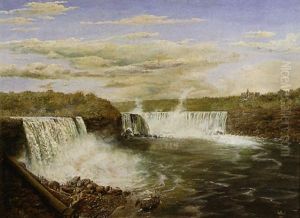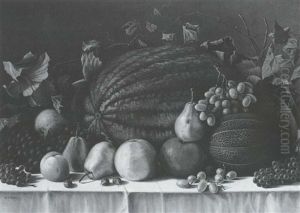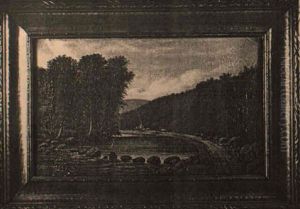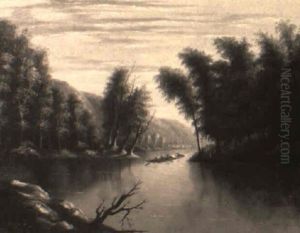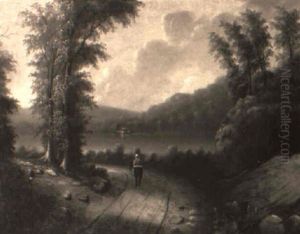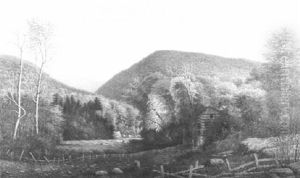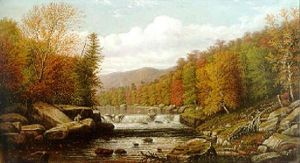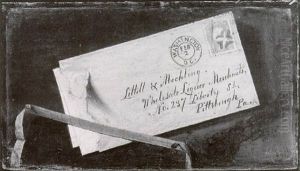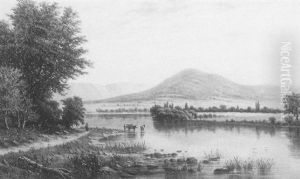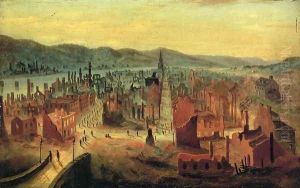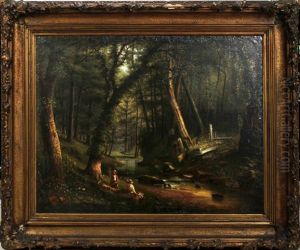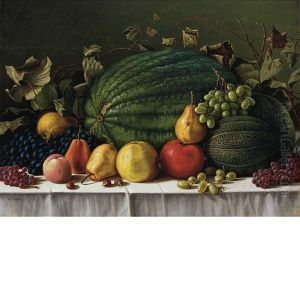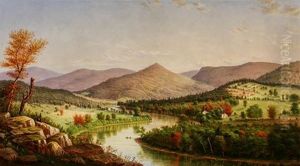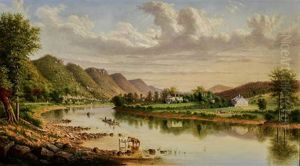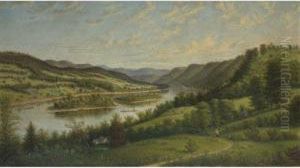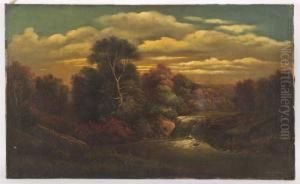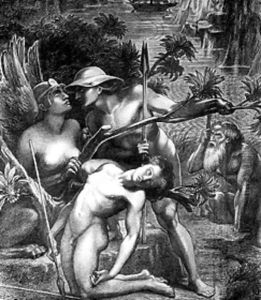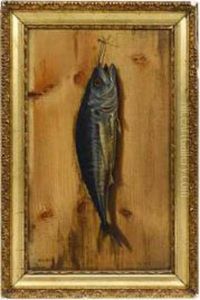William Coventry Wall Paintings
William Coventry Wall was an English-born American artist known for his landscape paintings. Born in Liverpool, England, on August 23, 1811, Wall showed an early interest in art and was apprenticed to a house and ship painter as a young man. This early experience likely influenced his later work, which often featured architectural elements and maritime scenes.
In 1832, Wall immigrated to the United States, where he settled in Pittsburgh, Pennsylvania. Pittsburgh's burgeoning industry and picturesque surroundings provided ample inspiration for Wall, who became one of the region's most prominent landscape painters. He was particularly adept at capturing the interplay of light and atmosphere, which gave his paintings a distinctive, almost ethereal quality.
Throughout the mid-19th century, Wall's reputation grew, and he became associated with the Hudson River School, a group of like-minded artists who emphasized natural beauty and often imbued their landscapes with a sense of romanticism. Although Wall never achieved the same level of fame as some of the leading figures of the Hudson River School, his work was nevertheless well received and exhibited at various institutions, including the Pennsylvania Academy of the Fine Arts.
Wall's contributions to American art extended beyond his own painting. He was a respected teacher, influencing a generation of artists in the Pittsburgh area. He also worked on a series of lithographs, which helped to popularize his and others' work. Despite the advent of photography, Wall's landscapes remained popular due to their artistic quality and emotional depth.
William Coventry Wall continued to paint throughout his life, and although his output decreased in his later years, he remained active in the Pittsburgh art community. He passed away on March 26, 1892, leaving behind a body of work that continues to be appreciated for its contribution to American landscape painting and the documentation of the 19th-century American frontier.
